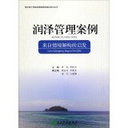Characteristics of bacterial pathogens associated with acute diarrhea in children under 5 years of age: a hospital-based cross-sectional study.
الكلمات الدالة
نبذة مختصرة
Acute diarrhea is a leading cause of morbidity and mortality in children, particularly in those under the age of 5 years. Rotavirus is recognized as the leading cause of acute diarrhea in children, however, the contribution of bacterial pathogens as causative agents varies throughout the world. Here we report a hospital-based prospective study to analyze the characteristics of bacterial pathogens associated with acute diarrhea in children under 5 years of age.
Stool samples were collected from 508 patients with acute diarrhea under 5 years of age who presented at our hospital. Nine pathogens were isolated and identified by culturing, serology or PCR, these included Salmonella spp., Shigella spp., Vibrio cholerae, diarrheagenic Escherichia coli (DEC), Aeromonas spp., Plesiomonas spp., Vibrio parahaemolyticus, Campylobacter spp. and Yersinia enterocolitica. Antimicrobial sensitivity tests of these pathogens were conducted. The most commonly detected pathogen, Salmonella spp., was further investigated by PCR and sequencing of antibiotic resistance-related genes.
Pathogens were identified in 20.1 % of the 508 samples. The most commonly detected pathogens were Salmonella spp. (8.5 %), followed by DEC (4.7 %), Campylobacter jejuni (3.0 %) and Aeromonas spp. (2.0 %). The resistance rates to ampicillin and tetracycline in Salmonella spp. were >60 %, but were <30 % to cephalosporins and quinolones. More than 50 % of DEC strains displayed resistance to ampicillin, cefotaxime and tetracycline, and 60 % of C. jejuni strains were resistant to ciprofloxacin but highly sensitive to the other antibiotics. Among 12 cephalosporin-resistant Salmonella isolates, TEM-1 and CTX-M-14 determinants were present in two (16.7 %) isolates. PCR screening for plasmid-mediated quinolone resistance genes revealed gyrA mutations in one of three highly quinolone resistant isolates.
Salmonella spp., DEC, Campylobacter spp. and Aeromonas spp. were the most commonly detected bacterial pathogens in children under the age of 5 years with acute diarrhea. Our findings indicate that ampicillin and tetracycline are not suitable as first line therapeutic drugs against Salmonella spp. Resistance to third generation cephalosporins and quinolones was also detected. TEM-1 and CTX-M-14 genetic determinants, and gyrA mutations, were the major mechanisms associated with high levels of cephalosporin and quinolone resistance, respectively, in Salmonella isolates.



